

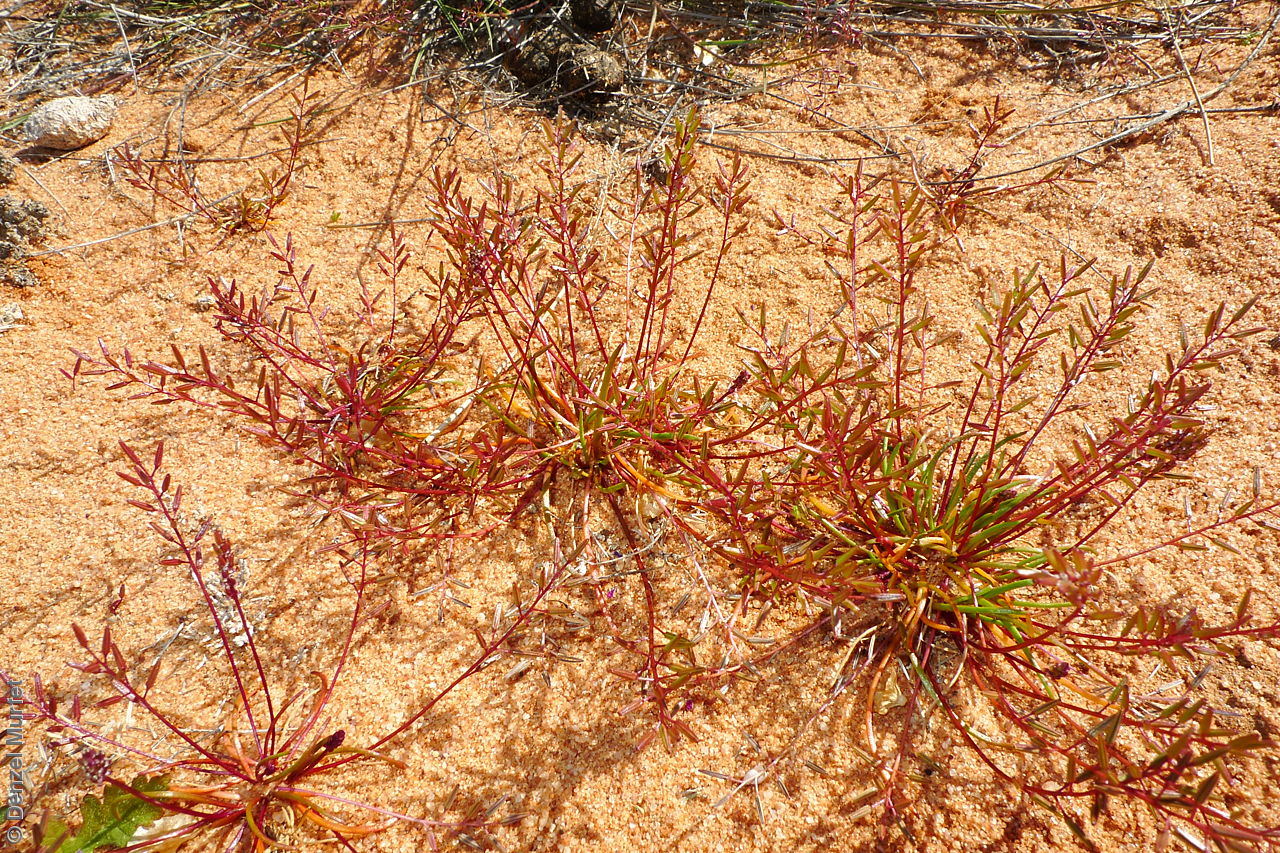
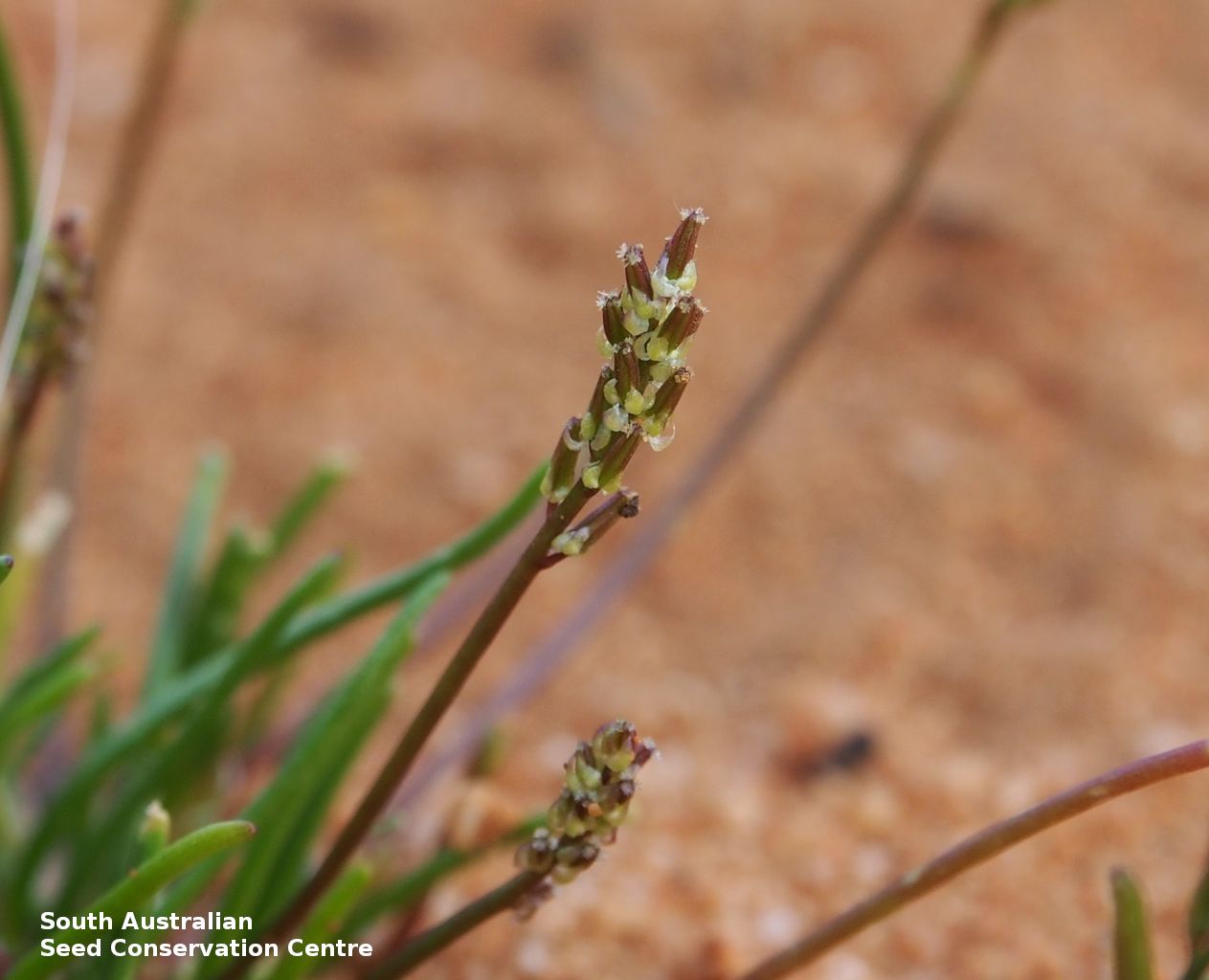
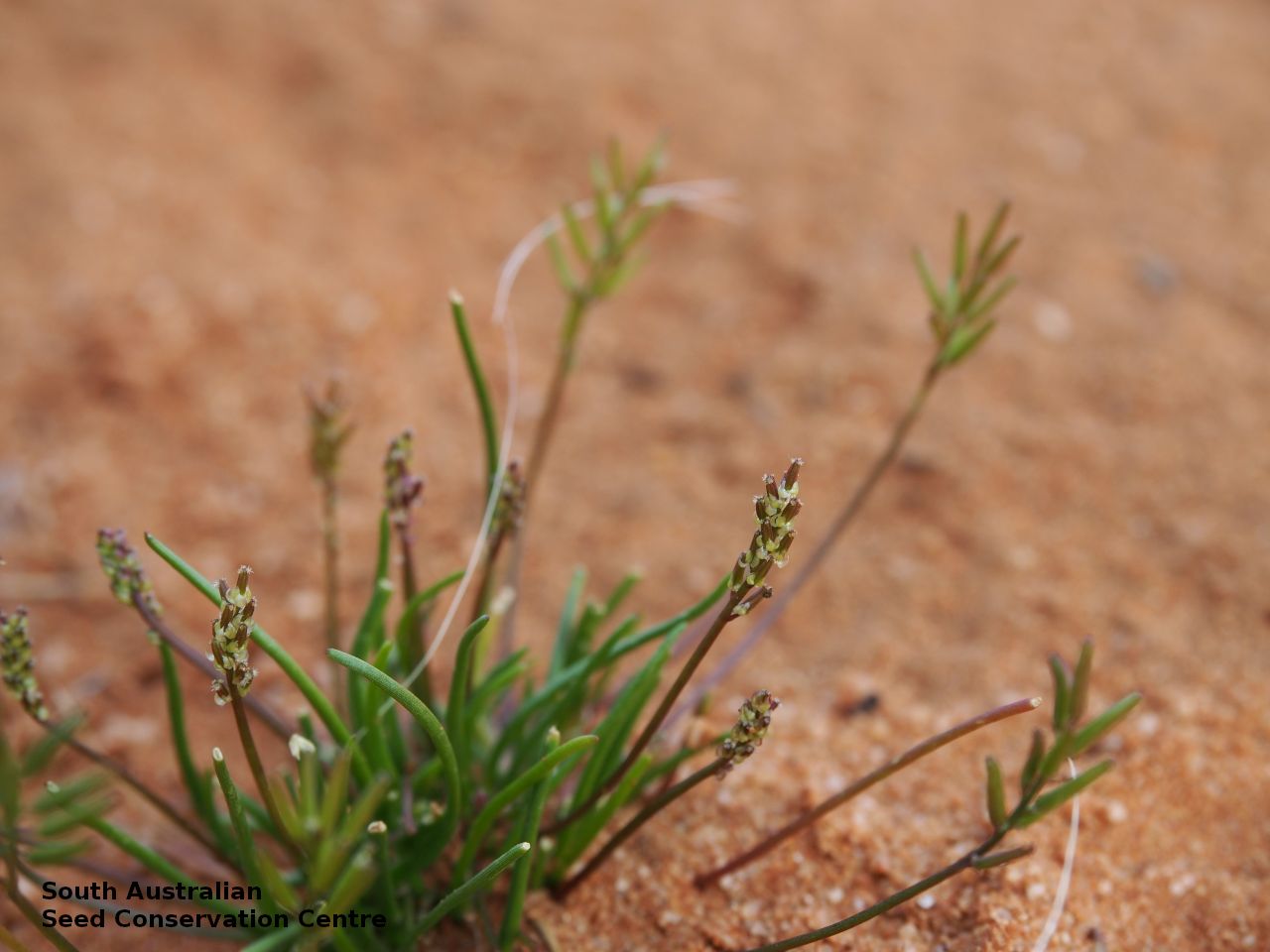

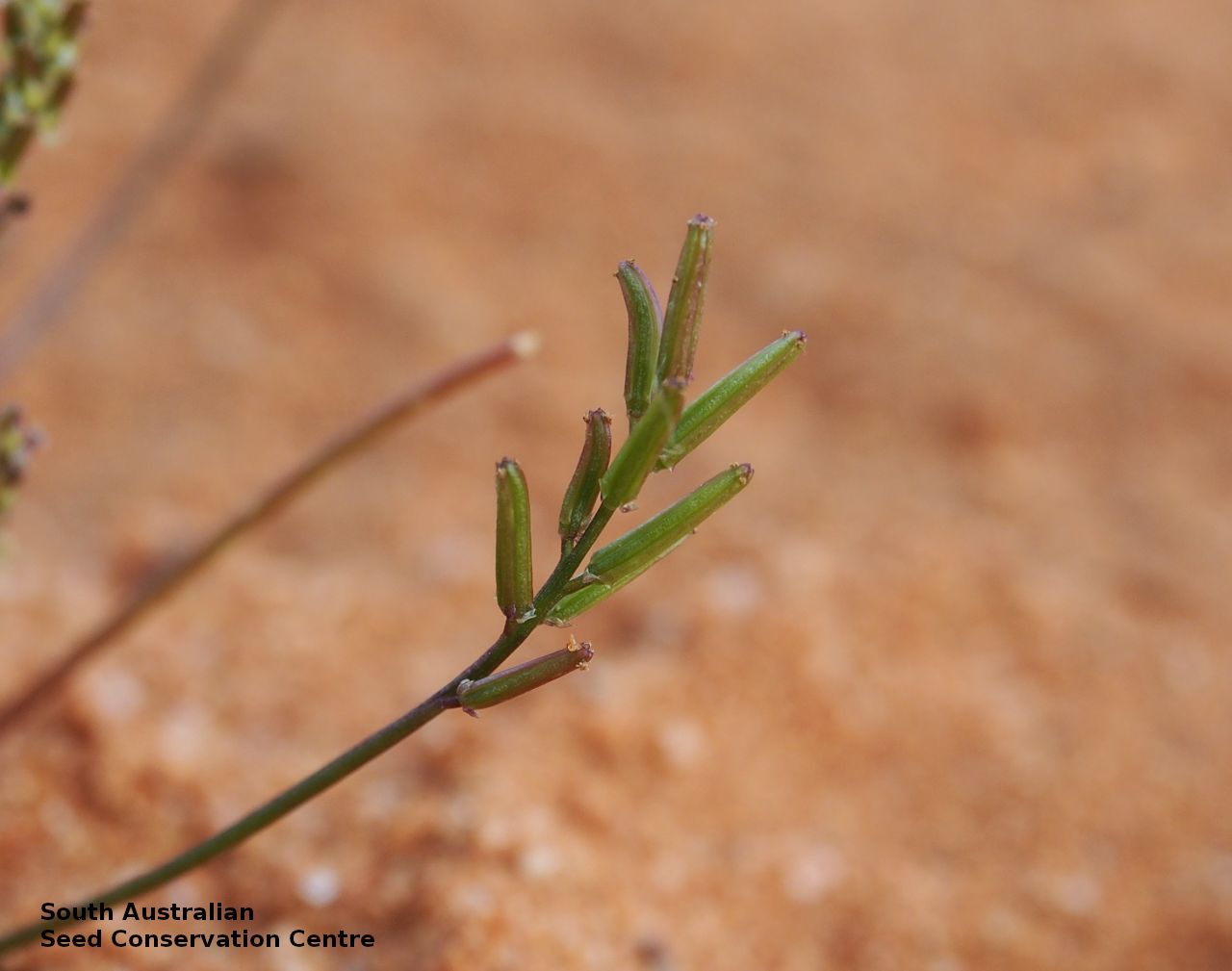
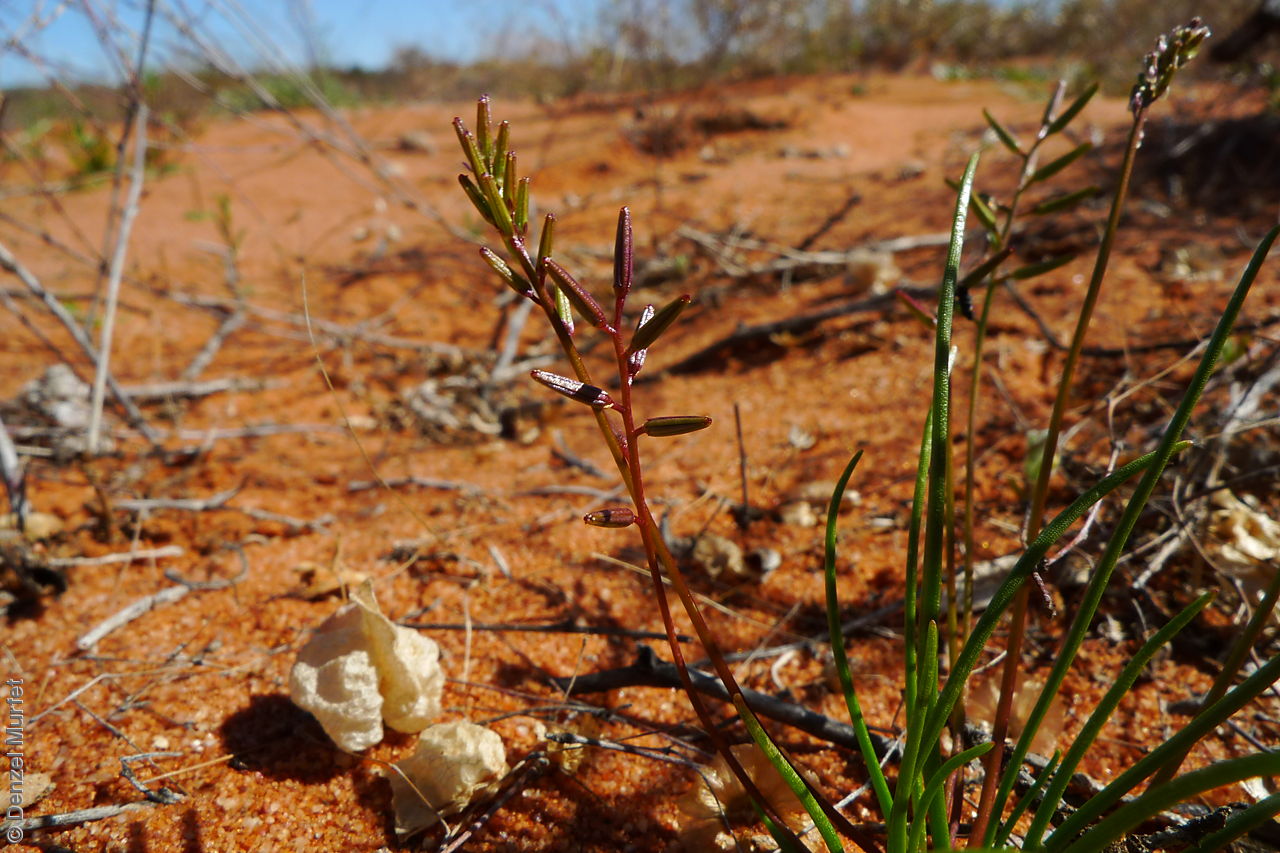
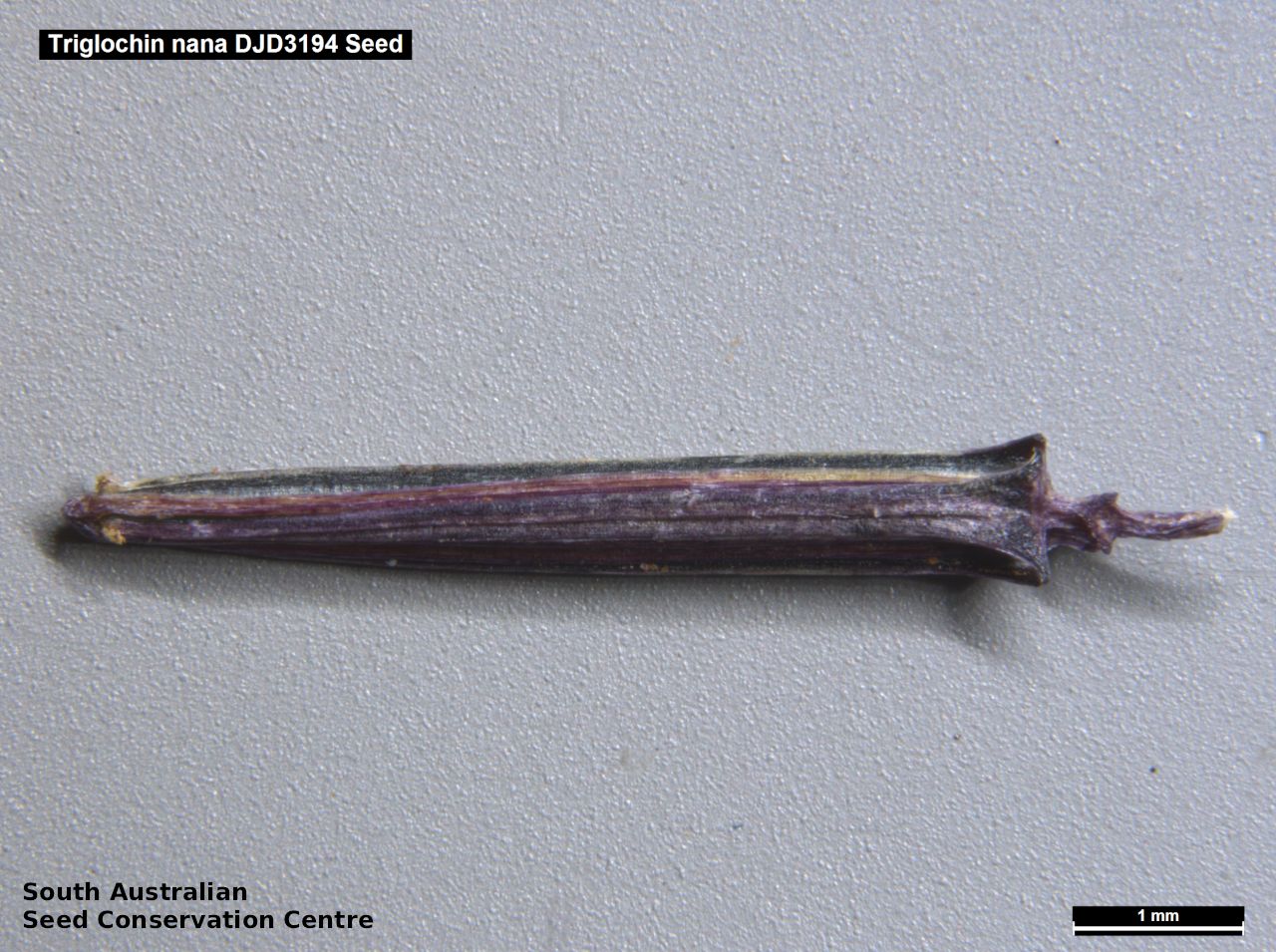
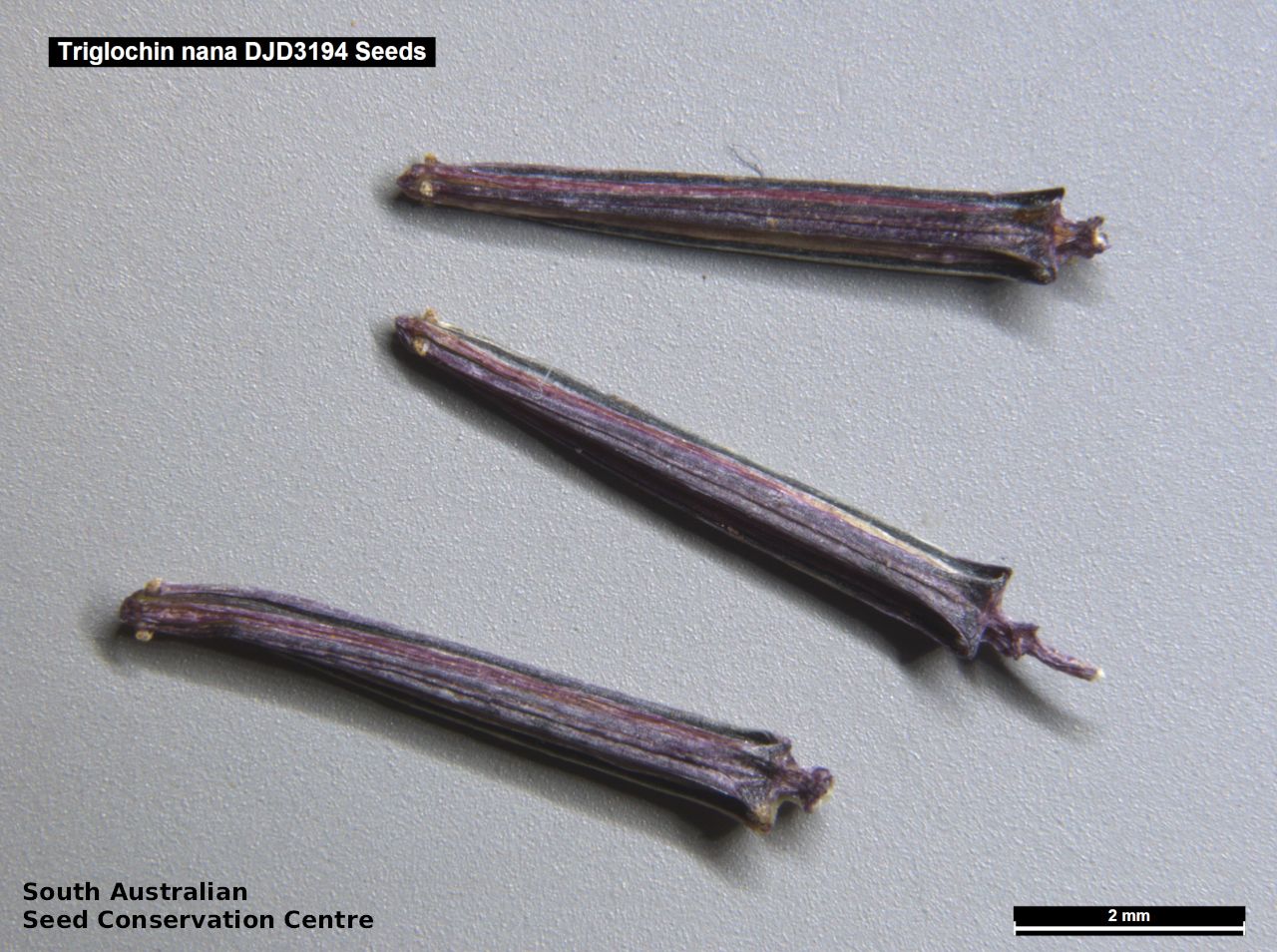


Botanical art
Prior names
Triglochin centrocarpum, orth.var., partly
Triglochin nanum, orth.var.
Triglochin centrocarpa var. brevicarpa
Triglochin centrocarpum var. nanum
Triglochin centrocarpum, orth.var., partly
Common names
Dwarf Arrowgrass
Etymology
Triglochin from the Greek 'treis' meaning three and 'glochis' meaning a point; referring to its three-sided carpels. Nana from the Latin 'nanus' meaning dwarf; referring to its small stature.
Distribution and status
Found across South Australia, growing in edge of claypans, within intermittent watercourses and run-on areas, edge of salt lakes and Chenopod-rich plains and shallow seasonal or ephemeral wetlands. Also found in Western Australia, Northern Territory, New South Wales and Victoria. Native. Common in South Australia. Uncommon in New South Wales.
Herbarium regions: North Western, Lake Eyre, Nullarbor, Gairdner-Torrens, Flinders Ranges, Eastern, Eyre Peninsula, Northern Lofty, Murray, Yorke Peninsula, Southern Lofty, Kangaroo Island, South Eastern, Green Adelaide
AVH map: SA distribution map (external link)
Plant description
Slender annual herb, to 12 cm high. Leaves flat and thread-like, to 6 cm long, shorter than the inflorescence. Inflorescence an erect or ascending spike to 5.5 cm long, fruiting part at the top to 3 cm long, with 3–24 fruits. Flowering July to October. Fruits are reddish-green almost linear but tapering to the summit fruit to 6 mm long and 1.2 mm wide just above base, on a long stalk with six seed segments (carpels), 3 fertile alternating with 3 undeveloped sterile ones. Seeds are reddish-green narrow wedge-shaped seed to 6 mm long and 0.5 mm wide, with 2 short, downwards-pointing spurs at the base. Seed embryo type is linear.
Seed collection and propagation
Collect seeds between August and November. Collect mature fruits either by breaking off individual spikes or by removing plants that are drying off with fruits that are reddish-green and seed segments coming apart easily. Place the fruit spikes in a tray and leave to dry for 1 to 2 weeks. Then rub the dried fruit spikes with a rubber bung to dislodge the seeds. Use a sieve to separate any unwanted material. Store the seeds with a desiccant such as dried silica beads or dry rice, in an air tight container in a cool and dry place.
| Location | No. of seeds (weight grams) | Number of plants | Date collected | Collection number Collection location | Date stored | % Viability | Storage temperature |
|---|---|---|---|---|---|---|---|
| MSB | 2,700 (2.05 g) | 40+ | 18-Sep-2007 | PJL2565 South Eastern | 80% | ||
| BGA | 10,000 (1.93 g) | 50+ | 1-Sep-2016 | DJD3399 Lake Eyre | 1-Nov-2017 | 90% | -18°C |
Number of plants: This is the number of plants from which the seeds were collected.
Collection location: The Herbarium of South Australia's region name.
% Viability: Percentage of filled healthy seeds determined by a cut test or x-ray.